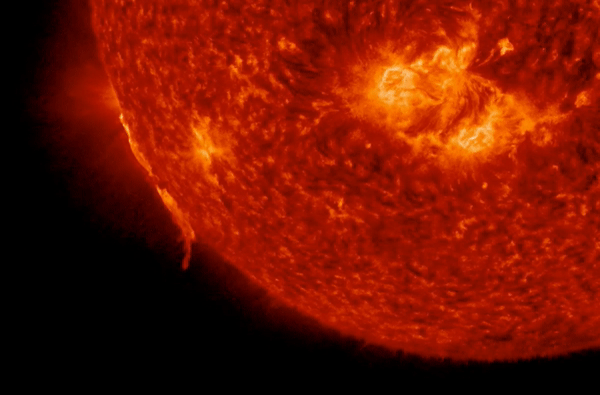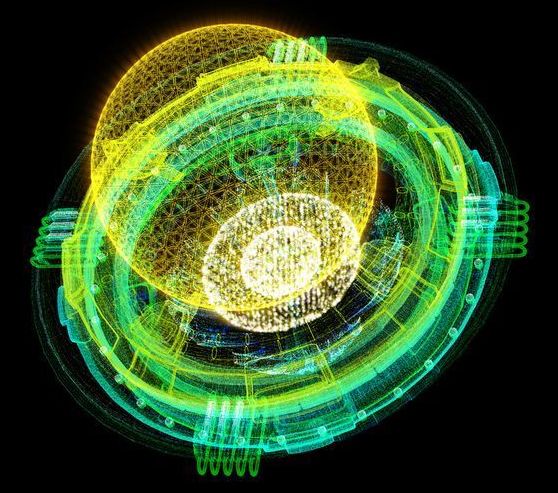Analysis of 12 papyrus fragments from the Tebtunis Temple suggests that certain paint techniques were developed and used well before the 15th Century.




Its SpaceX’s first-ever autonomous Dragon docking.
A SpaceX Dragon cargo ship arrived at the International Space Station today (Dec. 7) to deliver vital supplies for NASA and try something brand-new: park itself without the help of astronauts.
The private spaceflight company used a Falcon 9 rocket to launch CRS-21, the first flight to use the upgraded version of its Dragon cargo spacecraft, to the space station Sunday (Dec. 6) from NASA’s Kennedy Space Center in Florida. The vehicle autonomously docked with the orbiting laboratory today at 1:40 p.m. EST (1840 GMT), parking at the zenith, or space-facing, side of the station’s Harmony module.

O,.0 based on my sources could bring minor earthquakes perhaps also satellite outages.
The sun unleashed its most powerful solar eruption in more than three years on Sunday (Nov. 29).
The solar flare, which is a sudden, bright explosion of electromagnetic energy, measured as an M4.4 on the scale astronomers use for sun storms. M-class flares are medium-sized eruptions (compared to small C-class flares and large X-class flares) and rank on a scale from 1 to 9, with larger numbers representing stronger flares.


A number of small earthquakes sent tremors through a number of California counties on Sunday morning.
The strongest quake was a magnitude 4.4 earthquake near Lakeport in Northern California.
A smaller – but still sizeable – magnitude 3.6 earthquake hit near Warner Springs in San Diego County.


LOS ANGELES, CA / ACCESSWIRE / December 7, 2020 / US Nuclear (OTCQB: UCLE) is the prime contractor to build MIFTI’s fusion generators, which could be used in the relatively near future to power the propulsion systems for space travel and provide plentiful, low-cost, clean energy for the earth and other planetary bases once our astronauts get to their destination, be it the moon, Mars, Saturn or beyond. Chemical powered rockets opened the door to space travel, but are still far too slow and heavy even to travel to distant planets within our solar system, let alone travel to other stars. Accordingly, NASA is now looking to nuclear powered rockets that can propel a space vessel at speeds close to the speed of light and thermonuclear power plants on the moon and Mars, as these are the next steps towards space exploration and colonization.
The US Energy Secretary, Dan Brouillette, recently said, “If we want to engage in outer space, or deep space as we call it, we have to rely upon nuclear fuels to get us there… that will allow us to get to Mars and back on ‘one tank of gas’.” This is made possible by the large energy density ratio which makes the fuel weight for chemical fuels ten million times higher than the fuel that powers the fusion drive. NASA is now relying on private companies to build spaceships: big companies like Boeing, but more and more on high-tech startups such as Elon Musk’s Space-X, Jeff Bezos’s Blue Origin, and Richard Branson’s Virgin Atlantic.
While nuclear fission has been considered as a basis for the next generation of rocket engines, the fuel used for fission is enriched uranium, which is scarce, costly, unstable, and hazardous. On the other hand, thermonuclear fusion uses a clean, low-cost isotope of hydrogen from ordinary seawater, and one gallon of this seawater extraction yields about the same amount of energy as 300 gallons of gasoline.

“Alignments between these two planets are rather rare, occurring once every 20 years or so, but this conjunction is exceptionally rare because of how close the planets will appear to one another,” Rice University astronomer Patrick Hartigan said in a statement. “You’d have to go all the way back to just before dawn on March 4, 1226, to see a closer alignment between these objects visible in the night sky.”
Aligning with the winter solstice on December 21, 2020, the two planets will be just 0.1 degrees apart — less than the diameter of a full moon, EarthSky says. The word “conjunction” is used by astronomers to describe the meeting of objects in our night sky, and the great conjunction occurs between the two largest planets in our solar system: Jupiter and Saturn.
The planets will be so close, they will appear, from some perspectives, to overlap completely, creating a rare “double planet” effect.
